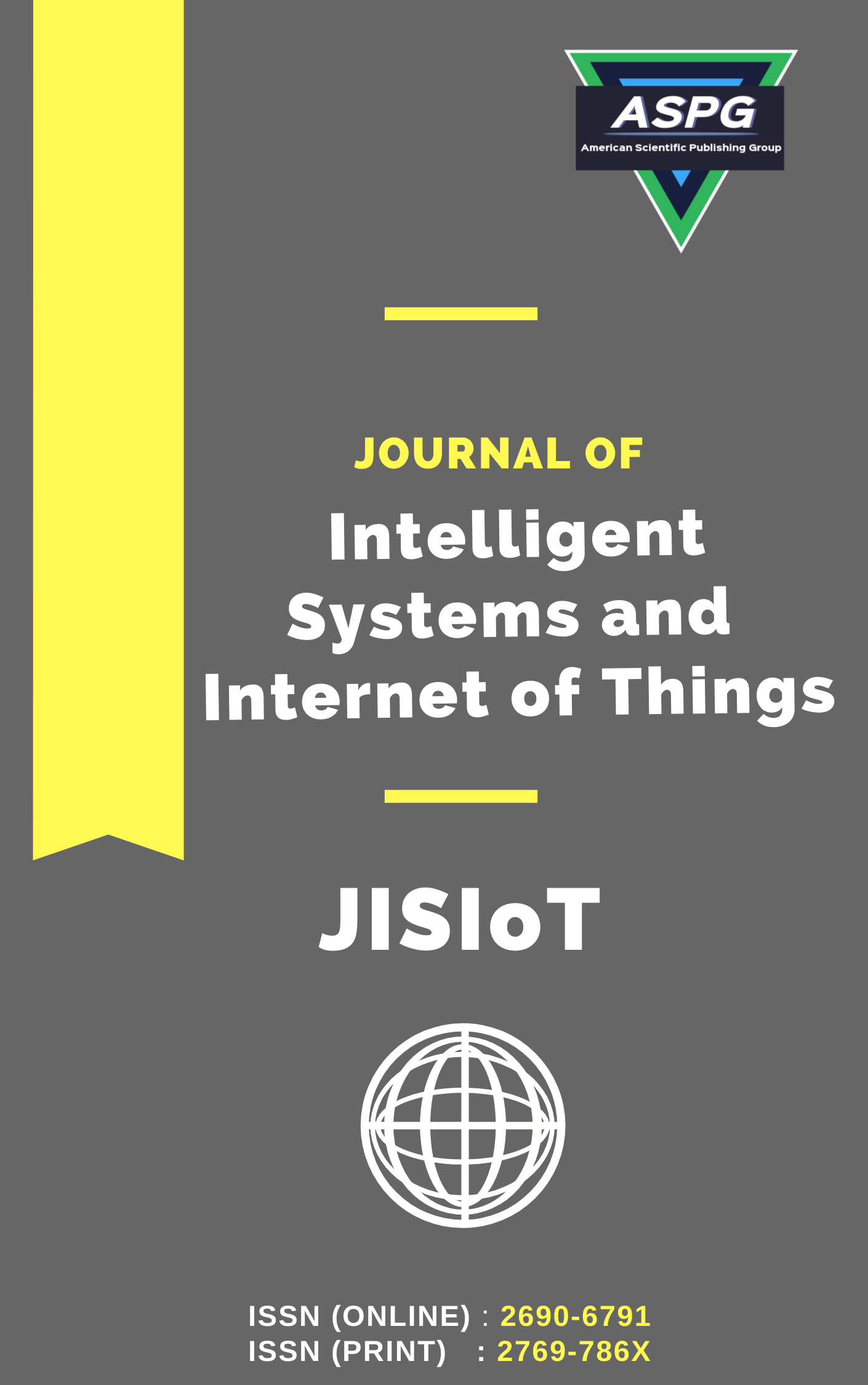

Volume 18 , Issue 1 , PP: 218-226, 2026 | Cite this article as | XML | Html | PDF | Full Length Article
Abhilash S. Nath 1 * , Manu Gupta 2 , J. Sirisha Devi 3 , A Babisha 4 , D. Venkata Ravi Kumar 5 , B. Rama Subba Reddy 6
Doi: https://doi.org/10.54216/JISIoT.180116
With direct implications for the regional climate, biogeochemistry, hydrology, and biodiversity, land cover change has been identified as one of the top priorities for the development of sustainable management plans. Among the primary causes of global warming are deforestation and forest fragmentation, which have profound effects on biodiversity preservation and ecosystem functioning. Machine learning techniques, like those employed in computer vision, have become widely used, making it possible to segment satellite images semantically to distinguish between areas that are forested and those that are not. This study presents a novel method for segmenting and classifying UAV images to detect deforestation using machine-learning models. In this case, noise reduction as well as normalisation is applied to input, which consists of UAV-based forest region photos. Semantic U-convolutional regressive neural network combined with deep radial quantile temporal neural network was then used to segment and classify this image. The suggested model's simulation analysis is assessed based on several metrics, including F-1 score, normalized coefficient ratio, average precision, AUC, and detection accuracy. proposed method yielded 97% detection accuracy, 93% normalized coefficient ratio, 91% AUC, F-1 score of 94% and 95% AVERAGE PRECISION.
Biodiversity , Deforestation rate , Machine learning model , Regressive neural network , Radial quantile temporal
[1] J. V. Solórzano, J. F. Mas, J. A. Gallardo-Cruz, Y. Gao, and A. F. M. de Oca, "Deforestation detection using a spatio-temporal deep learning approach with synthetic aperture radar and multispectral images," ISPRS J. Photogramm. Remote Sens., vol. 199, pp. 87–101, 2023.
[2] Y. C. Putra and A. W. Wijayanto, "Automatic detection and counting of oil palm trees using remote sensing and object-based deep learning," Remote Sens. Appl.: Soc. Environ., vol. 29, p. 100914, 2023.
[3] B. Haq et al., "Tech-Driven Forest Conservation: Combating Deforestation With Internet of Things, Artificial Intelligence, and Remote Sensing," IEEE Internet Things J., 2024.
[4] R. D. D. Altarez, A. Apan, and T. Maraseni, "Deep learning U-Net classification of Sentinel-1 and 2 fusions effectively demarcates tropical montane forest's deforestation," Remote Sens. Appl.: Soc. Environ., vol. 29, p. 100887, 2023.
[5] A. Buchelt et al., "Exploring artificial intelligence for applications of drones in forest ecology and management," For. Ecol. Manage., vol. 551, p. 121530, 2024.
[6] S. Srivastava and T. Ahmed, "DLCD: Deep learning-based change detection approach to monitor deforestation," Signal, Image Video Process., pp. 1–15, 2024.
[7] T. A. T. Do, H. D. Tran, and A. N. T. Do, "Classifying forest cover and mapping forest fire susceptibility in Dak Nong province, Vietnam utilizing remote sensing and machine learning," Ecol. Inform., vol. 79, p. 102392, 2024.
[8] V. Nasiri, P. Hawryło, P. Janiec, and J. Socha, "Comparing Object-Based and Pixel-Based Machine Learning Models for Tree-Cutting Detection with PlanetScope Satellite Images: Exploring Model Generalization," Int. J. Appl. Earth Obs. Geoinf., vol. 125, p. 103555, 2023.
[9] Q. Wang, B. Tang, K. Wang, J. Shi, and M. Li, "Evaluation of the gully erosion susceptibility by using UAV and hybrid models based on machine learning," Soil Tillage Res., vol. 244, p. 106218, 2024.
[10] A. R. Malipatil, C. V. Pallavi, and L. S. Geetha, "Investigation and Monitoring Deforestation by Evaluating the Satellite Images and Machine Learning," in Proc. Int. Conf. Adv. Comput., Commun. Appl. Inform. (ACCAI), 2023, pp. 1–8.
[11] D. A. Subhahan and C. V. Kumar, "Deforestation rate estimation using crossbreed multilayer convolutional neural networks," Multimedia Tools Appl., pp. 1–27, 2024.
[12] T. F. Olivatto, F. F. Inguaggiato, and F. N. Stanganini, "Urban mapping and impacts assessment in a Brazilian irregular settlement using UAV-based imaging," Remote Sens. Appl.: Soc. Environ., vol. 29, p. 100911, 2023.
[13] O. W. Kent, T. W. Chun, T. L. Choo, and L. W. Kin, "Early symptom detection of basal stem rot disease in oil palm trees using a deep learning approach on UAV images," Comput. Electron. Agric., vol. 213, p. 108192, 2023.